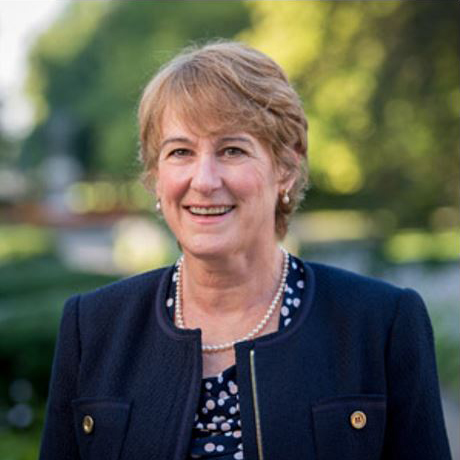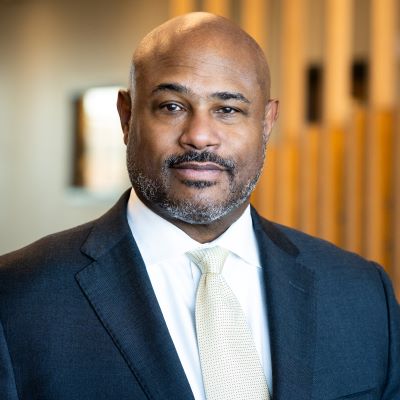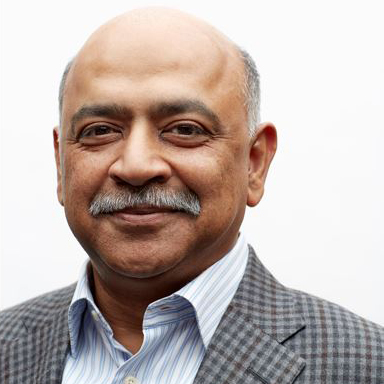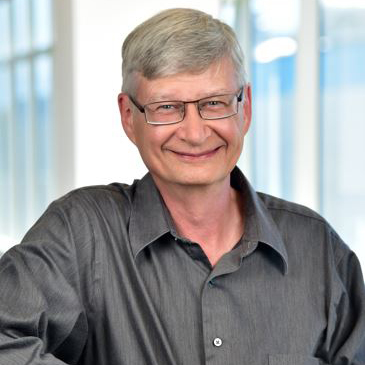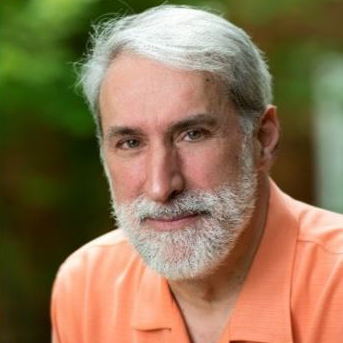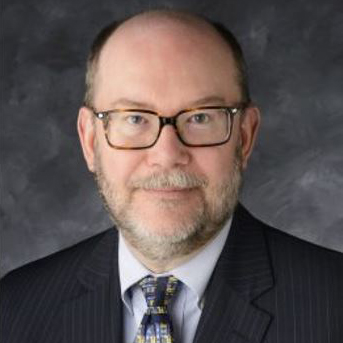Members of the Scientific Advisory Committee to the Laboratory Director
The Scientific Advisory Committee (SAC) was launched by Laboratory Director Paul Kearns in 2018. The SAC is an external committee of experts charged with providing the Laboratory Director insight on forward-looking scientific areas and how to best achieve research outcomes of the highest standard in Argonne’s core capabilities, priority projects, and strategic initiatives.
ROBERT C. ARMSTRONG
Director, MIT Energy Initiative
Robert C. Armstrong directs the MIT Energy Initiative, an institute-wide initiative at the Massachusetts Institute of Technology linking science, technology, and policy to transform the world’s energy systems. A member of the MIT faculty since 1973, Armstrong served as head of the Department of Chemical Engineering from 1996 to 2007. His research interests include energy, the rheology of complex materials, and polymer fluid mechanics.
In 2008, Armstrong was elected into the National Academy of Engineering for conducting outstanding research on non-Newtonian fluid mechanics, co-authoring landmark textbooks, and providing leadership in chemical engineering education.
Armstrong received the Warren K. Lewis Award in 2006 and the Professional Progress Award in 1992, both from the American Institute of Chemical Engineers, and the 2006 Bingham Medal from the Society of Rheology, which is devoted to the study of the science of deformation and flow of matter. Armstrong was a member of MIT’s Future of Natural Gas and Future of Solar Energy study groups, and is co-chairing the Future of Storage study currently underway. He co-edited Game Changers: Energy on the Move with former Secretary of State George P. Shultz.
SALLY M. BENSON
Co-Director, Precourt Institute for Energy
Sally M. Benson joined Stanford University in 2007 where she is a professor of energy resources engineering in the School of Earth, Energy & Environmental Sciences, Co-Director of the Precourt Institute for Energy and Director of the Global Climate and Energy Project. Benson is responsible for fostering cross-campus collaborations on energy and guiding the growth and development of a diverse research portfolio. Formerly, Benson was at Lawrence Berkeley National Laboratory, where she held a variety of key positions, including Deputy Director, Associate Director for Energy Sciences and Director of the Earth Sciences Division. Benson is regarded as an authority on carbon capture and storage. She also uses energy systems analysis to help guide decisions about the most promising pathways for clean energy development.
Benson received a BA in geology from Barnard College and a MS and PhD in materials science and mineral engineering from U.C. Berkeley.
MARY GALVIN
William K. Warren Foundation Dean of the College of Science
University of Notre Dame
Mary Galvin is the William K. Warren Foundation Dean of the College of Science at the University of Notre Dame. As dean, Galvin leads more than 550 faculty, staff, and postdoctoral researchers in the college, which is home to more than 1750 undergraduate and 700 graduate students.
She received MS and ScD degrees in polymer science from the Materials Science Department at the Massachusetts Institute of Technology. After graduating from MIT, Galvin joined Bell Laboratories, where she served for 14 years, becoming a Distinguished Member of the Technical Staff. In 1998, Galvin joined the University of Delaware to help establish a new Department of Materials Science and Engineering and became a Distinguished Professor of Materials Science. At both Bell Labs and the University of Delaware, Galvin established research programs on the structure and property relationships that govern the performance of organic materials in light-emitting diodes (LEDs), photovoltaic cells, and thin film transistors. She has co-authored many publications in this area as well as on inorganic/organic nanocomposites and polymer blends. She has given numerous invited talks at national and international meetings and holds five U.S. patents.
In 2005, Galvin joined Air Products and Chemicals Inc., serving as technical lead for the development of new electroactive organic products and as a member of the Technology Leadership Team.
Following her time at Air Products, she worked as a program officer in the Department of Energy and the National Science Foundation (NSF). In 2013 she became the Director for the Division of Materials Research at NSF, where she managed a $307 million budget and was responsible for setting scientific priorities for materials science and condensed matter physics. In this role she was instrumental in establishing the Materials Genome Initiative at NSF and the Materials Innovation Platforms Program. Galvin is a fellow in the American Physical Society, was elected to the board of directors of the Materials Research Society, and has served on National Research Council panels including the Board of Chemical Science and Technology.
SEAN L. JONES, Deputy Laboratory Director for Science and Technology, U.S. Department of Energy (DOE) Argonne National Laboratory
Sean L. Jones is the deputy laboratory director for science & technology at the U.S. Department of Energy (DOE) Argonne National Laboratory. In this role, he serves as Argonne’s chief research officer and its senior science strategist and advisor. He works with the laboratory director and associate laboratory directors to implement a laboratory-wide science strategy and further develop Argonne’s $1.1 billion multidisciplinary science and technology portfolio, comprised of 21 research divisions, six national scientific user facilities, and over 1,700 research and technical staff.
Jones has more than 30 years of experience in the research and development area, across academia, industry and the federal government. Prior to joining Argonne, Jones served as assistant director of the National Science Foundation’s (NSF) Mathematical and Physical Sciences directorate – the agency’s largest organization – where he oversaw a $1.86 billion science portfolio, including five science divisions, a portfolio of domestic and international user facilities, and a suite of interdisciplinary research programs, centers and institutes. His 14-year career at the NSF also included leadership and program management roles in the Division of Materials Research, where he was the lead manager of 31 Materials Research Science and Engineering Centers across the United States. He served as the NSF’s executive secretary for the Committee on Strategy and Budget of the National Science Board, and he spent time on assignment in the White House Office of Science and Technology Policy, serving as a policy analyst and its assistant director for physical science and engineering.
Prior to joining the NSF, Jones served in several positions across academia and industry. He was chair and professor for both the optical and electronic engineering departments at Norfolk State University, the director of engineering for Applied Plasmonics, technical manager and distinguished member of technical staff at Bell Laboratories of Lucent Technologies, senior scientist at Luxcore Networks, and lead line engineer at Hoechst Celanese.
Jones is an industry-recognized expert in luminescent materials and the fabrication of optical waveguides and has been awarded nine U.S. patents. He is the co-inventor of Lucent’s high-bandwidth multimode optical fiber used in today’s Fiber-To-The-X (FTTX) applications such as FiOS cable television and Fiber-to-the-Home applications. His work led to the IEEE standards for 10G multimode optical fiber as well as the lasers and detectors employed in these systems.
Jones has a doctorate and a master’s degree in materials science and engineering from the University of Florida, and a bachelor’s degree in ceramic engineering from Clemson University. His honors include the Senior Executive Services Member Career Award, the White House Office of Science and Technology Policy’s Award for Excellence, and the National Science Foundation Director’s Equal Opportunity Achievement Award. He is a fellow of the Thomas Green Clemson Academy of Engineers and Scientists.
ARVIND KRISHNA
Chairman and Chief Executive Officer, IBM
Arvind Krishna is the Chairman and Chief Executive Officer of IBM. As a business leader and technologist, he has led the building and expansion of new markets for IBM in artificial intelligence, cloud, quantum computing, and blockchain. He has also played a significant role in the development of innovative IBM products and solutions based on these emerging technologies.
Over his 30-year career at IBM, Arvind led a series of bold transformations and delivered proven business results. He most recently drove the successful $34 billion acquisition of Red Hat – the largest software acquisition – that has defined the hybrid cloud market. Together, IBM and Red Hat give clients the unique ability to build mission-critical applications once and run them anywhere.
Arvind previously was senior vice president of Cloud and Cognitive Software, where he pioneered the company’s hybrid cloud business, transformed IBM’s entire software and services portfolio and offerings for cloud, and grew the business. He also headed IBM Research, where he drove innovation in core and emerging technologies including artificial intelligence, quantum computing, blockchain, cloud platform services, data-driven solutions, and nanotechnology. In 2016, Wired Magazine selected Arvind as “one of 25 geniuses who are creating the future of business” for his foundational work on blockchain.
MICHAEL C. MAYBERRY
Chief Technology Officer, Senior Vice President and Managing Director, Intel Labs
Dr. Michael C. Mayberry is the Chief Technology Officer for Intel. He is a Senior Vice President, and General Manager of Technology Development where he is responsible for the research, development and deployment of next-generation silicon logic, packaging, and test technologies that will produce future Intel products.
Since joining Intel in 1984 as a process integration engineer, Mayberry has held a variety of positions. As part of the California Technology Development team, he developed EPROM, flash, and logic wafer fabrication processes. In 1994, he moved to Sort Test Technology Development, responsible for roadmaps and development of test processes for Intel microprocessors. In 2005, he moved to Components Research and was responsible for research to enable future process options for Intel’s technology development organizations. In 2015, he moved to Intel Labs and became responsible for Intel’s product-driven research. In 2018, he moved to the Technology Development group at Intel.
Mayberry received his PhD in physical chemistry from the University of California, Berkeley, and his bachelor’s degree in chemistry and mathematics from Midland College.
MARK McGRANAGHAN
Vice President of Integrated Grid for the Electric Power Research Institute
Mark McGranaghan is Vice President of Integrated Grid for the Electric Power Research Institute (EPRI). This research area is leading the development of the next-generation integrated electric grid while developing innovations for optimal design, maintenance, and improvement of the existing grid. McGranaghan splits time between Knoxville and the Dublin, Ireland office where he is leading the expansion of EPRI’s European collaboration.
McGranaghan has authored more than 70 technical papers and articles on topics ranging from power quality to insulation coordination of extra high-voltage systems. His is an IEEE Fellow and in 2014 received the Charles Proteus Steinmetz Award for his expertise and dedication to power engineering standards development. He is a member of the executive committee of the CIGRE U.S. National Committee, Vice Chairman of the CIRED U.S. National Committee and a member of the IEC Advisory Committee on Electricity Transmission and Distribution. He is a co-author of the book Electrical Power Systems Quality, now in its third edition, the premier textbook on power quality and compatibility since its release in 1996.
From 2003 to 2010, McGranaghan was Director of Research in EPRI’s distribution and smart grid practices. During this period, he led restructuring of distribution system-related research and coordinated EPRI research efforts in the smart grid area with government and industry. As a result, EPRI launched the Smart Grid Demonstration Initiative and increased the technical strength of its team. Prior to joining EPRI, McGranaghan was Vice President at Electrotek Concepts from 1988 to 2003, where he helped the company develop a new business area and world-leading technical expertise around power quality and power system studies.
From 1978 to 1988 McGranaghan was a manager at McGraw-Edison/Cooper Power in Canonsburg, Pennsylvania. He led studies for both the utility industry and for internal McGraw-Edison applications. McGranaghan led studies using the Transient Network Analyzer resulting in basic designs for high-voltage power systems worldwide.
McGranaghan has a BS and MS in electrical engineering from the University of Toledo. He has an MBA from the University of Pittsburgh.
CHERRY MURRAY
Benjamin Pierce Professor of Technology and Public Policy at the John A. Paulson School of Engineering and Applied Sciences
Professor of Physics, Harvard University
Cherry Murray is currently on sabbatical at the University of Arizona, where she is Director of the Biosphere2 Institute with a focus on the nexus of environment, water, food, and energy, developing solutions for global sustainability.
Murray obtained both a BS and a PhD in physics from the Massachusetts Institute of Technology. Her research interests have varied from experimental condensed matter and surface physics to nanotechnology; innovation, research, and development of telecommunications networks; national security; and science and technology policy. Her current interests include policy, research, development, and innovation to sustain human civilization on future Earth.
From 1978 to 2004, Murray held a number of research positions at Bell Laboratories, Lucent Technologies, formerly AT&T Bell Laboratories and previously Bell Telephone Laboratories, Inc. Murray began as a Member of Technical Staff within the Physical Research Laboratory and finished her tenure as Senior Vice President for Physical Sciences and Wireless Research. She then served at Lawrence Livermore National Laboratory as Deputy Director for Science and Technology from 2004 to 2007, and as Principal Associate Director for Science and Technology from 2007 to 2009. She was dean of Harvard University’s School of Engineering and Applied Sciences from 2009 until 2014.
Murray served as the Director of the United States Department of Energy’s Office of Science from 2015 until 2017, overseeing $5.5 billion in competitive scientific research in the areas of advanced scientific computing, basic energy sciences, biological and environmental sciences, fusion energy sciences, high energy physics, and nuclear physics, as well as the management of 10 national laboratories.
A member of the National Academy of Sciences, the National Academy of Engineering, and the American Academy of Arts and Sciences, Murray has received the National Medal of Technology and Innovation as well as the American Physical Society Maria Goeppart-Mayer Award and George E. Pake Prize. She served as president of the American Physical Society in 2009, and currently serves as Chairperson of the Board of Governors of the Okinawa Institute of Science and Technology Graduate University. She is a member of the Board of Trustees of the Fulbright University Vietnam and is a member of the American Academy of Arts and Sciences.
DANIEL G. NOCERA
Patterson Rockwood Professor of Energy, Harvard University
Daniel G. Nocera is the Patterson Rockwood Professor of Energy at Harvard University. He is widely recognized as a leading researcher in renewable energy and is the inventor of the artificial leaf and bionic leaf. Nocera has accomplished the solar fuels process of photosynthesis – the splitting of water to hydrogen and oxygen using light from neutral water – at atmospheric pressure and room temperature. He has performed this solar process at efficiencies of greater than 10%. The artificial leaf was named by Time magazine as Innovation of the Year for 2011. He has since elaborated this invention to accomplish a complete artificial photosynthetic cycle. To do so, he created the bionic leaf, which is a bio-engineered bacterium that uses the hydrogen from that artificial leaf and carbon dioxide from air to make biomass and liquid fuels. The bionic leaf, which was named by the World Economic Forum as the Breakthrough Technology for 2017, performs artificial photosynthesis that is ten times more efficient than natural photosynthesis. Extending this approach, Nocera has achieved a renewable and distributed synthesis of ammonia (and fertilizer) at ambient conditions by coupling solar-based water splitting to a nitrogen fixing bioorganism, which is powered by the hydrogen produced from water splitting.
Nocera’s research contributions in renewable energy have been recognized by several awards, including the Leigh Ann Conn Prize for Renewable Energy, Eni Prize, IAPS Award, Burghausen Prize, and the United Nation’s Science and Technology Award. He has also been awarded the Inorganic Chemistry, Harrison Howe, Kosolapoff, and Remsen Awards from the American Chemical Society. He is a member of the American Academy of Arts and Sciences, the U.S. National Academy of Sciences, and the Indian Academy of Sciences. He was named as one of the 100 Most Influential People in the World by Time Magazine, was 11th on the New Statesman’s list on the same topic, is a frequent guest on TV and radio, and is regularly featured in print.
In 2008, Nocera founded Sun Catalytix, a company committed to developing energy storage for the wide-spread implementation of renewable energy. In August 2014, Lockheed Martin purchased the assets of Sun Catalytix, and now Sun Catalytix technology is under commercialization under the venture Lockheed Martin GridStar™ Flow.
DANIEL A. REED
Senior Vice President for Academic Affairs (Provost)
University of Utah
Daniel A. Reed is the Senior Vice President for Academic Affairs (Provost) at the University of Utah. Previously, he was Vice President for Research and Economic Development, University Chair in Computational Science and Bioinformatics, and Professor of Computer Science at the University of Iowa. He also served as Microsoft’s Corporate Vice President for Technology Policy and Extreme Computing, where he helped shape Microsoft’s long-term vision for technology innovations in cloud computing and the company’s associated policy engagement with governments and institutions worldwide.
Before joining Microsoft, he was the founding director of the Renaissance Computing Institute at the University of North Carolina at Chapel Hill, where he also served as Chancellor’s Eminent Professor and Vice Chancellor for Information Technology. Prior to that, he was Gutgsell Professor and Head of the Department of Computer Science at the University of Illinois at Urbana-Champaign and Director of the National Center for Supercomputing Applications. He was also one of the principal investigators and chief architect for the National Science Foundation TeraGrid.
Reed has served as a member of the U.S. President’s Council of Advisors on Science and Technology and the President’s Information Technology Advisory Committee. He is the past chair of the Board of Directors of the Computing Research Association and currently serves on its government affairs committee. He has been a member of the ICANN Generic Names Supporting Organization Council. He currently chairs the Department of Energy’s Advanced Scientific Computing Advisory Committee and serves as a member of the NSF National Center for Optical-Infrared Astronomy Management Oversight Council.
Reed is a Fellow of the ACM, the IEEE, and the AAAS. He received his BS from the University of Missouri-Rolla and his MS and PhD from Purdue University, all in computer science.
VIJAY SWARUP
Vice President for Research and Development
ExxonMobil Research & Engineering Company
Dr. Swarup joined the company in 1987 as an engineer at Exxon Research and Engineering in Clinton, New Jersey. Over his career, he has progressed through a variety of engineering, planning and managerial roles at company locations in Redwater, Alberta, Canada; Baytown, Texas; Baton Rouge, Louisiana; Houston, Texas and Fairfax, Virginia.
In 2006, he became the Global Technology Planning Manager for ExxonMobil Chemical. In 2008, he was appointed Global Olefins Marketing Manager for ExxonMobil Chemical Company. He moved from Houston, Texas to Fairfax, Virginia in 2010 to become Vice President of Basestocks, Specialties and Asphalt for ExxonMobil Lubricants and Specialties Company. He was appointed Manager of Planning and Business Development for ExxonMobil Chemical in April, 2012.
In April, 2013, Dr. Swarup was appointed Corporate Strategic Research Manager, ExxonMobil Research and Engineering Company. On November 1, 2014, he was appointed Vice President, Research and Development, ExxonMobil Research and Engineering Company.
Vijay holds Bachelor of Science degrees in Chemistry and in Chemical Engineering from Purdue University and a PhD in Chemical Engineering from Rutgers University.


